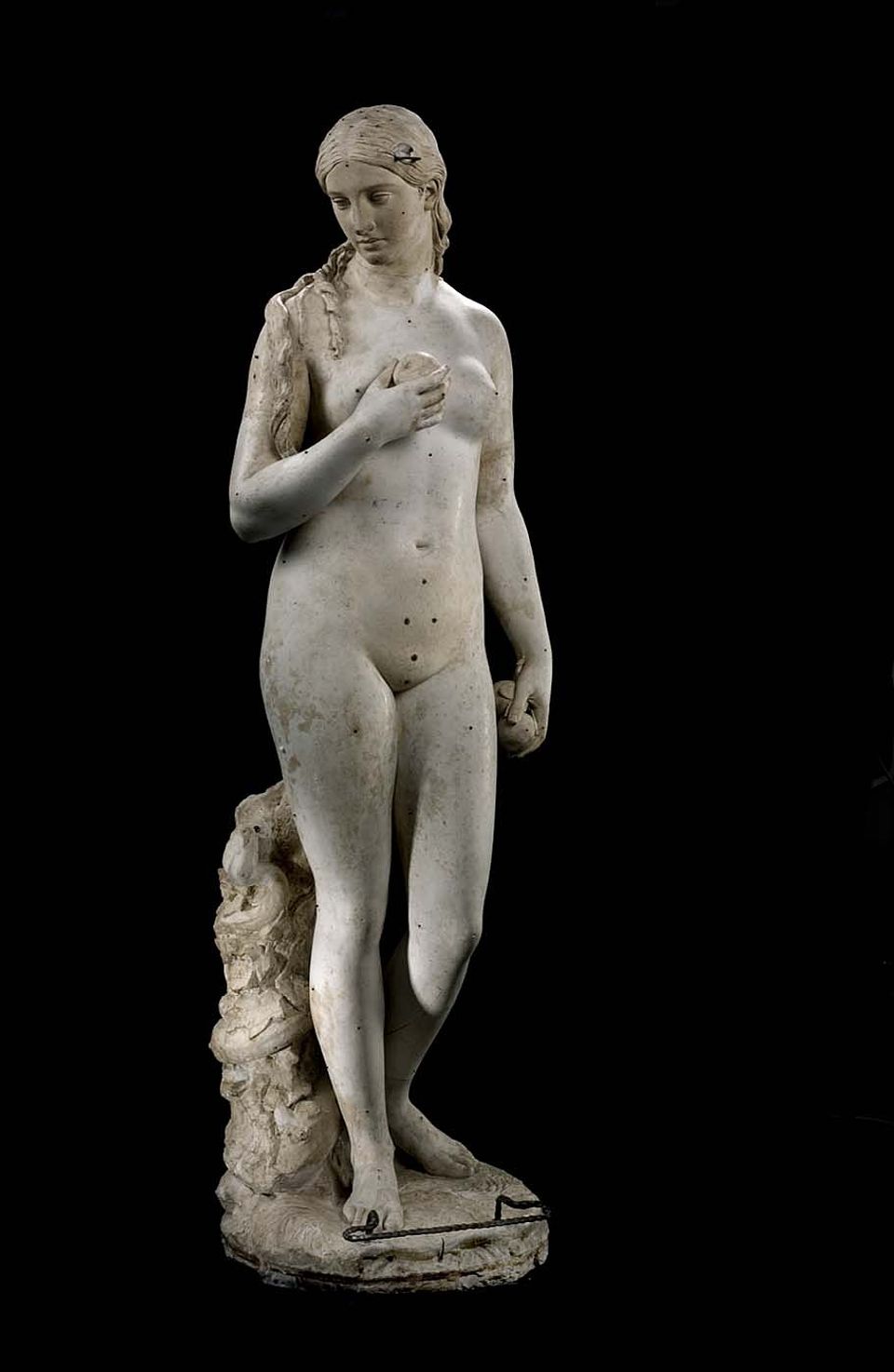
This post is part of an ongoing series on Eye Level: The Best of Ask Joan of Art. Begun in 1993, Ask Joan of Art is the longest-running arts-based electronic reference service in the country. The real Joan is Kathleen Adrian or one of her co-workers from the museum’s Research and Scholars Center. These experts answer the public's questions about art. Earlier this year, Kathleen began posting questions on Twitter and made the answers available on our Web site.
Question: I have noticed several statues such as Hiram Powers's Eve Tempted that appear to have holes bored in them. What caused the holes and why are they not repaired?
Answer: The holes that you see in the plaster versions of statues such as Eve Tempted are from a technique known as pointing. This is a method used by sculptors and stone carvers to transfer the proportions of a clay or plaster model to a block of stone.
Although the sculptor must be adept at carving, he often entrusted the execution of his work to assistants or craftsmen. To transfer measuring points from a model to a block of stone, the sculptor would take three reference points on both model and block. The points correspond to width, height and depth. Then, from many points on a series of planes about the model, measurements are made to the precise depths of the model's form.
At corresponding points on the block of stone, holes are drilled to the correct depths and the surrounding stone is then cut away. Proportional calipers can be used to produce reliefs or statues of smaller or larger scale. Artists initially used calipers to copy a sculpture, but this process was simplified significantly with the invention of the pointing machine. A pointing machine acted as a three-dimensional guide to aid the carver in transferring the design from plaster to marble. The machine consisted of a vertical bar with a perpendicular bar attached on a movable "armature." Metal need points attached to the crossbar were adjusted to touch the model at spots previously marked, to indicate depth. When the machine was moved to an exactly corresponding location beside the marble, a hole was carved or drilled until the needle penetrated to a depth proportional to the depth on the model. This continued until a set of holes covered the marble. The stone was then cut away as far as the bottom of all the holes, producing a rough outline of the figure.


















